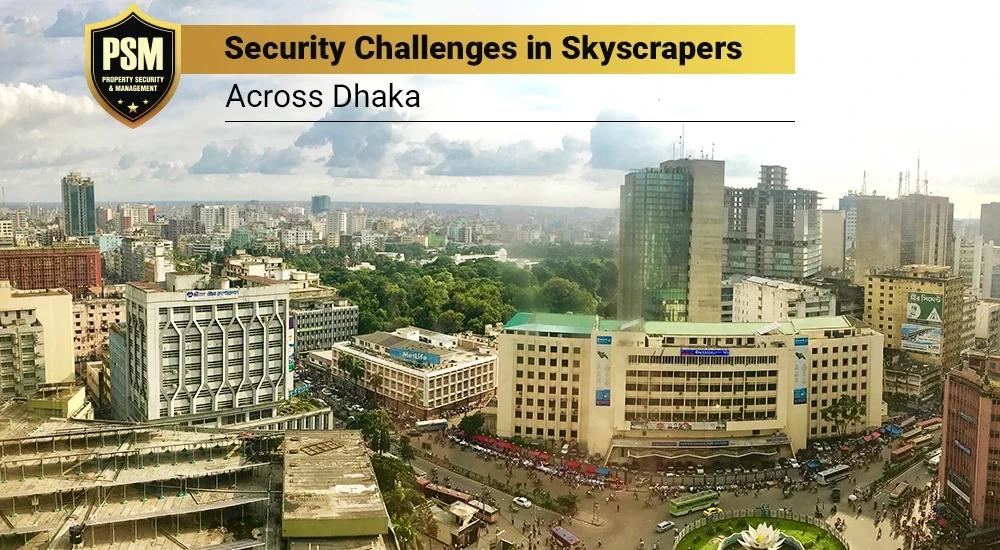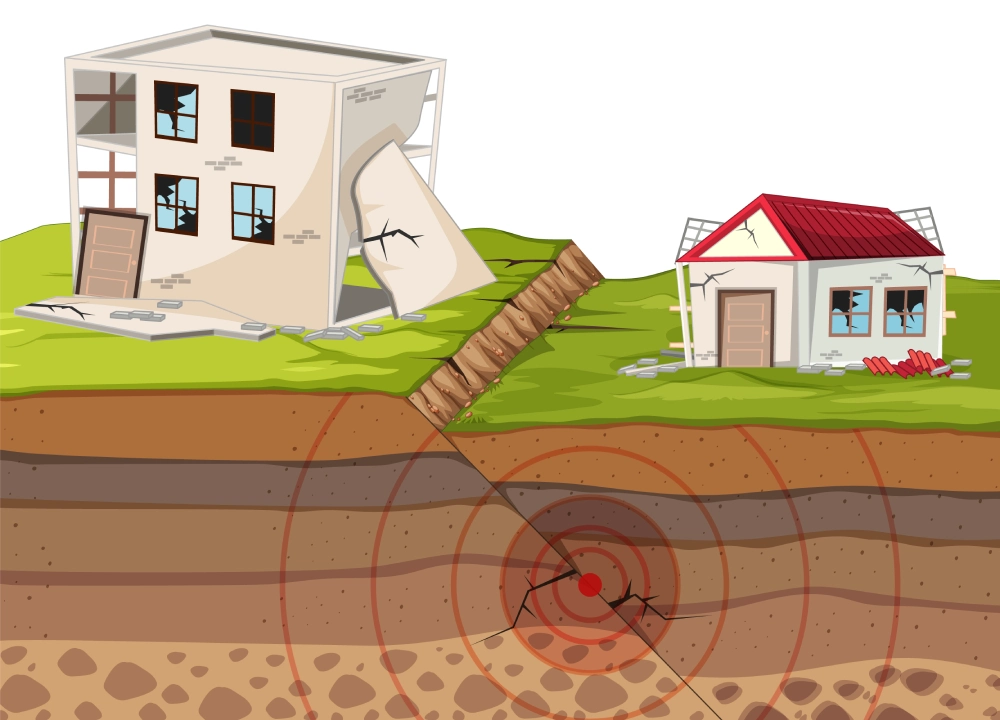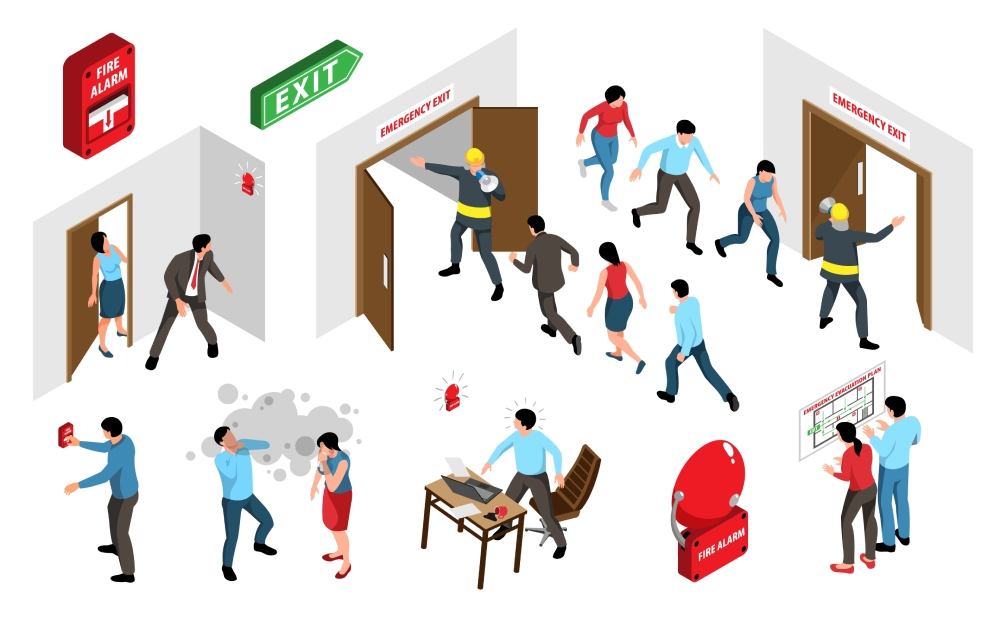- July 26, 2025
- Posted by: Mrinmoy Ghosh
- Category: Apartment Living

As Dhaka’s skyline rapidly evolves, the city is witnessing a boom in the development of skyscrapers and high-rise buildings. These towering structures, often symbols of urban growth and economic progress, also bring with them a unique set of safety and security challenges. From fire risks to structural vulnerabilities, managing the safety of skyscrapers requires detailed planning, regulatory oversight, and modern technology.
In this blog, we explore the major challenges for skyscrapers in Dhaka and offer insights into what a comprehensive skyscrapers safety guide should include for a secure urban future.
1. Fire Safety and Emergency Preparedness
One of the most pressing concerns for high-rise buildings is fire safety. Fires in tall buildings are difficult to control due to their height, occupancy density, and limited evacuation options.
Common Challenges:
- Inadequate Firefighting Infrastructure: Many buildings in Dhaka lack fire hydrants, sprinklers, and smoke control systems.
- Poor Fire Exit Planning: Stairwells are often too narrow or obstructed, making emergency evacuations dangerous.
- Delayed Emergency Response: Congested roads and high building elevations delay access for fire trucks and responders.
Recommended Safety Measures:
- Installation of automatic sprinkler systems and fire alarms on every floor.
- Regular fire drills and tenant training.
- Integration of smoke detectors, fire-rated doors, and fire extinguishers in line with RAJUK and Fire Service guidelines.
2. Structural Integrity and Earthquake Resilience

Dhaka lies within a seismic zone, making earthquake resistance a critical component of skyscraper safety.
Challenges for Skyscrapers:
- Use of Substandard Materials: Cost-cutting leads to compromises in the quality of cement, steel, and reinforcement.
- Design Flaws: Some buildings fail to comply with seismic codes or lack deep foundations required for high-rises.
- Retrofitting Issues: Older high-rises are rarely updated to meet current earthquake safety standards.
Safety Guide Solutions:
- Ensure structural designs are vetted by qualified engineers with seismic expertise.
- Conduct soil tests before construction to determine appropriate foundation systems.
- Retrofit older buildings using modern damping systems and base isolators.
3. Access Control and Surveillance
With large numbers of residents and daily visitors, skyscrapers face challenges in maintaining tight access control.
Security Challenges:
- Unmonitored Entry Points: Buildings with multiple access points are vulnerable to unauthorized entry.
- Limited Staff Training: Security personnel are often inadequately trained to handle modern security systems or emergencies.
- Lack of Centralized Monitoring: Absence of 24/7 surveillance allows suspicious activity to go unnoticed.
What the Safety Guide Recommends:
- Use of biometric access control, RFID cards, and guest management systems.
- Installation of a centralized CCTV system monitored by trained personnel.
- Emergency response protocols and incident reporting procedures.
4. Elevator Safety and Power Backup
Elevators are lifelines in high-rise buildings, but they also pose serious safety concerns if not properly managed.
Key Concerns:
- Power Outages: Sudden blackouts can trap residents in elevators, causing panic and health risks.
- Poor Maintenance: Worn-out cables, malfunctioning sensors, and outdated software increase accident risks.
- Insufficient Emergency Features: Lack of emergency communication systems or ventilation in elevators.
Solutions in the Safety Guide:
- Regular maintenance and safety audits by certified elevator technicians.
- Installation of backup generators and automatic rescue devices.
- Emergency call buttons connected to a 24/7 helpdesk.
5. Evacuation and Crowd Management

In emergencies, high-rise evacuations become a complex task, especially in densely populated buildings.
Common Problems:
- Inadequate Exit Signage: Residents unfamiliar with evacuation routes may get disoriented during emergencies.
- Crowd Panic: Lack of crowd control measures can lead to stampedes or injuries.
- Insufficient Refuge Areas: Very few buildings in Dhaka incorporate refuge floors or safe zones.
Skyscrapers Safety Guide Tips:
- Clear, illuminated signage and evacuation maps on every floor.
- Designated refuge areas or balconies in compliance with local codes.
- Regular drills coordinated with local fire service and civil defense teams.
6. Cybersecurity in Smart Buildings
Modern skyscrapers are increasingly adopting smart technologies — from automated lighting to IoT-based security systems. However, this digital shift brings cyber risks.
Emerging Challenges:
- Unprotected Networks: Without secure firewalls, smart building systems can be hacked.
- Data Breaches: Personal information of residents can be compromised.
- System Failures: A cyberattack can disable crucial systems like surveillance or fire detection.
Security Guide Must-Haves:
- Network security audits and firewall protections.
- Strong password policies and two-factor authentication for system access.
- Collaboration with cybersecurity firms for regular threat assessments.
7. Waste Management and Sanitation Hazards
High-rises generate a large volume of waste daily, and improper disposal poses health and environmental risks.
Key Issues:
- Overflowing Waste Rooms: Without daily disposal, waste can accumulate quickly.
- Odor and Pest Infestation: Poor ventilation or sanitation attracts pests and affects hygiene.
- Water Contamination: Improper drainage can lead to waterlogging or contamination of nearby water bodies.
Best Practices:
- Install waste segregation systems for recycling, organic, and hazardous waste.
- Daily collection schedules and pest control routines.
- Maintain a separate drainage system to handle grey and stormwater efficiently.
Dhaka’s vertical growth is inevitable, and with it comes the responsibility to create a culture of safety, security, and sustainability in our skyscrapers. The risks are real — but with planning, modern systems, and strict enforcement of building codes, we can rise above them.
The future of urban living in Dhaka depends not just on how high we build, but how safely we do it.
